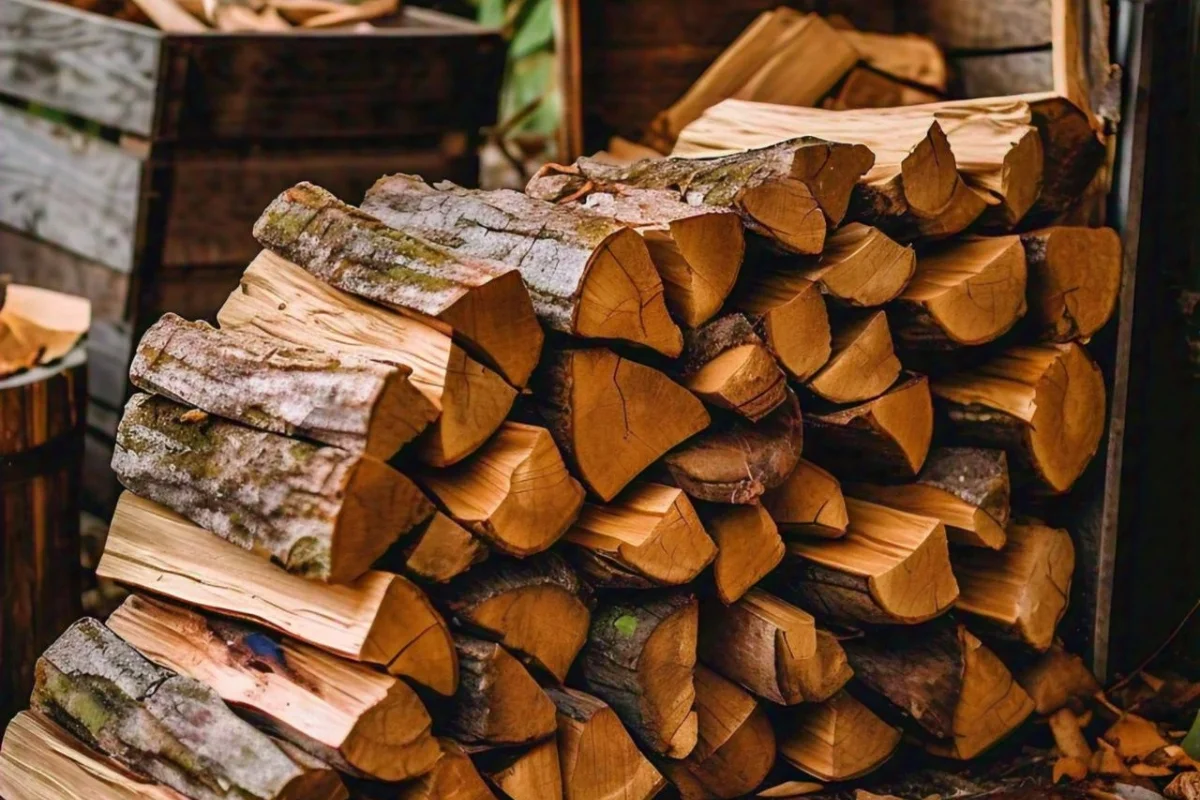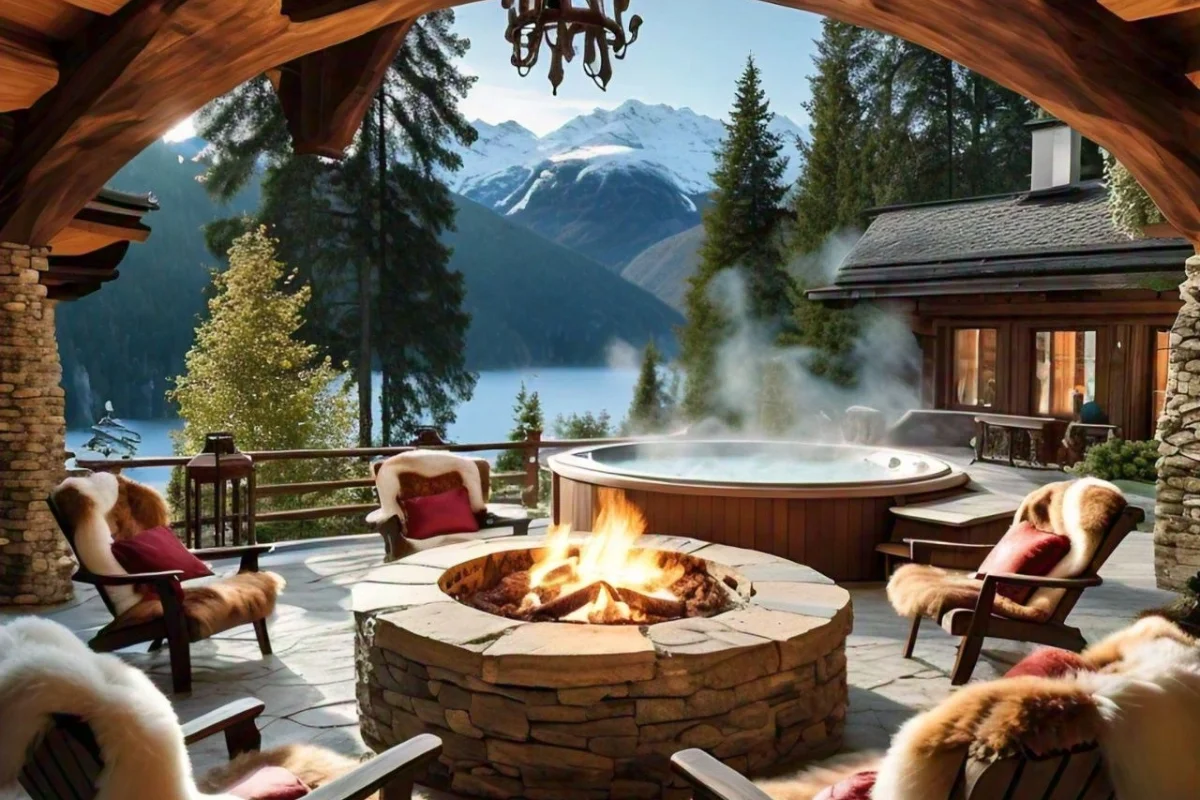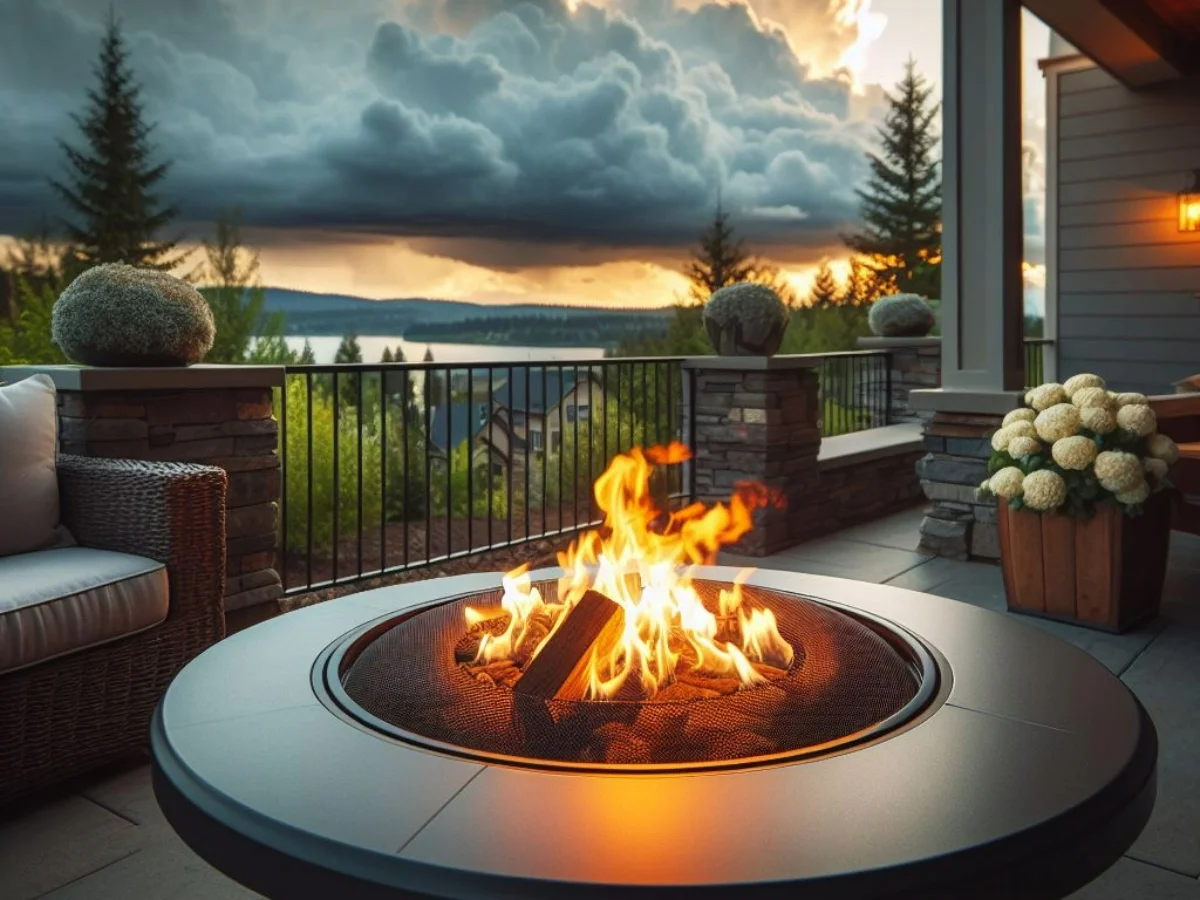
Wood-burning fire pits are a fantastic choice for outside gatherings, setting the mood and allowing people to be social under the stars. A question that many individuals consider is, are wood burning fire pits safe? It is imperative to ensure the safety of these outdoor fire pits because they can carry risks that may result in property loss, injuries, or health problems if not managed correctly. This informative guide will consider the potential hazards associated with wood-burning fire pits, offer some safety tips that are simple for you to put into action, and share some best practices so that you can enjoy your fire pit responsibly and safely.
Wood Fire Pits:
Wood fire pits are a favorite detail in many backyards and offer a natural and rustic way to have a fire. These fire pits range from simple DIY to professional, fully installed pieces. Understanding wood fire pits means understanding the different types available, like in-ground pits, portable fire bowls, and built-in masonry pits. Each has its unique characteristics and benefits. They all allow us to remain warm, cook a couple of items, and gather around a central point for socializing.
Wood fire pits operate by burning natural wood logs, producing heat and light. The type of wood used can directly impact the performance and safety of the fire. Hardwoods, such as oak and maple, are the favored choice because they have long burn times and lower sap content, limiting the number of sparks. Similarly, the fire pit’s design and its placement will be essential to its safety and operation. The correct airflow, non-combustible material selection, and sufficient distance from flammable attachments are primary concerns to ensure that your wood-burning fire pit is installed properly and working safely.
Risks Related to Wood Burning Fire Pits:
1. Sparks and Embers:
One of the main risks when using a wood burning fire pit is the dispersal of sparks and embers. In the course of burning, the flames can produce small, glowing fragments that could travel outside of the fire pit and ignite surrounding combustible materials, like leaves, mulch or wooden structures. In dry and windy conditions, this could set off a fire that spreads beyond the fire pit
2. Uncontrolled Fires:
Another major danger of a wood burning fire pit is the possibility of creating an uncontrollable fire. Without proper attention, the fire can grow beyond the set area and lead to hazardous incidents. Various factors can contribute to this risk, such as being too much fuel, the weather (high wind), an improperly maintained fire pit and others.
3. Smoke Inhalation:
Inhaling smoke from a fire pit that burns wood can pose risks to your health. This can be especially hazardous to those suffering from respiratory issues such as asthma or chronic bronchitis. Wood smoke emits particulate matter and toxic compounds that can cause irritation to the lungs and make a situation that is already bad for respiratory patients even worse.
4. Toxic Fumes:
The fumes from burning painted or treated wood in a fire pit release toxic fumes, which can also be dangerous. Some treated wood, such as pressure-treated wood, contains chemicals that can release harmful chemicals when burned, such as arsenic among other pernicious chemicals.
5. Property Damage:
The intense heat generated by a wood-burning fire pit can cause damage to nearby surfaces and structures. Materials like wooden decks, plastic or synthetic surfaces, and even certain types of stone are susceptible to damage from the heat generated from a fire pit. This heat can make materials warp, melt, or become ruined in another way.
6. Ash and Residue:
The ash and residue resulting from wood-burning fire pits can also lead to damage to property and cleanup issues. The ash from a fire pit can blow around and cause a mess, potentially leading to staining or damage to outdoor surfaces. Remember that embers can remain hot for a longer period of time than you might think, which can cause a risk of an accidental fire situation if not properly managed.
7. Air Pollution:
Polluted air from wood-burning fire pits harms the environment by depositing particulate matter and smoke into the atmosphere. This pollution can affect air quality and contribute to broader environmental issues, such as smog and respiratory problems in the community.
8. Wildfire Risk:
Flying embers and sparks from an outdoor wood-burning fire may increase the risk of wildland fires. These embers can travel up to distances much farther than you would expect in dry or windy conditions, potentially starting fires in nearby trees or vegetation, leading to much larger wildfires. Therefore, when fire danger is elevated or it is windy, you should always make sure to use a spark screen on your fire pit and consider not burning at all during those times.
Usage Tips for Safe Fire Pit Operation:
1. Use a Spark Screen or Cover:
A spark screen or cover is an essential accessory for reducing the hazards of embers and sparks escaping the fire pit. By maintaining a protective barrier, the spark screen prevents ignited, stray embers from igniting nearby flammable materials, and decreases the chances of accidents. Ensure the screen is always in place and securely attached while the fire is lit.
2. Maintain a Safe Distance:
The placement of your fire pit is crucial to safety. Situate your fire pit at least 10-15 feet away from your building, fences, or vegetation. This distance helps prevent heat damage and reduce the likelihood of the fire spreading to combustible materials. Always make sure that the area around the fire pit is clear of flammable debris, such as leaves or branches.
3. Avoid Overloading the Fire Pit:
Do not overload the fire pit by adding too much wood at once, as this can lead to greater heat and flames which can produce uncontrolled combustion and fire. Add wood in small quantities to ensure that you can manage the fire to burn safely and steadily. Do not use accelerants or flammable liquids to start or maintain the fire, as this can cause flare-ups and make the fire unmanageable.
4. Supervise the Fire:
Don’t leave the fire pit unattended while a fire is still burning inside it. There should always be an adult present to observe the fire and ensure that it is maintained safely. If you need to step away, extinguish the fire completely before leaving the area.
5. Extinguish the Fire Properly:
When it’s time to put out a fire, do it safely by allowing the fire to burn down to ashes before you put it out. Spread out the ashes using a fire pit tool or shovel and pour water over them, stirring them occasionally so that all embers are put out. Make sure not to use too much water, as this can cause steam and make ash spread, and also make sure not to pour the water too quickly. Wait until the ash cools completely before you dispose of it
6. Use Proper Fuel:
The fuel used in fire pits can have an impact on their performance and their smoke emissions. To get the most out of your fire pit, you should use well-seasoned, dry wood that burns cleanly and creates less smoke. You should avoid using treated or painted wood in your fire pit, as these materials contain chemicals that are harmful to you and your fire pit.

Are Wood Burning Fire Pits Safe to Breathe?
When burning wood in a fire pit, the smoke or products of combustion can introduce pollutants to the surrounding air. Wood smoke is full of harmful substances, including carbon monoxide, volatile organic compounds (VOCs), and fine particulate matter that can be harmful to human health, especially those with added respiratory sensitivities like people with asthma, allergies, or chronic bronchitis. By making sure to burn dry, well-seasoned wood in a well-ventilated area, you can reduce the amount of smoke and harmful emissions released. It is essential to remember that there is no amount of smoke that is safe, so managing your exposure to smoke is critical. Especially for individuals with respiratory sensitivities or other health concerns, it’s important to mitigate exposure to smoke.
Conclusion:
In short, wood-burning fire pits are excellent ways to add ambiance and warmth to our outdoor spaces. However, it is important to think about the potential health impacts associated with them. Proper usage and safety measures, such as using clean-burning wood, ensuring adequate ventilation, and monitoring smoke levels, can significantly reduce the risks associated with breathing air around fire pits. By taking these precautions, , individuals can benefit from the warmth and ambiance of wood burning while minimizing the health risks and creating a safer environment for all to use.









